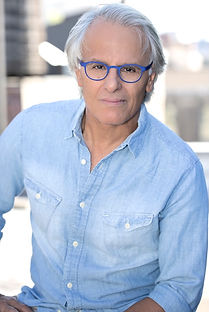The Jewish Lens Curriculum, Picturing Israel: History Heritage and Homeland: Challenging Antisemitism and Anti-Zionism Through Photography, was created in response to the colossal tragedy of October 7, 2023. This gave birth to the incredible rise of antisemitic and anti-Zionist acts, which are often born of historical ignorance and fed by negative stereotypes and assumptions. We must give our children the tools and knowledge they need to proudly defend their Jewish and Israeli history and heritage, while challenging the false assumptions and generalizations that others make about Jews today.
The curriculum uses the art of photography to help young people acquire knowledge of the critical moments of Jewish history. It’s specially designed for use with middle- and high-school students, in day schools, congregational schools, and informal education in community settings.
Goals
Through their participation in The Jewish Lens curriculum, students:
• Learn of the historical moments that are central to the land of Israel, Jewish heritage,and the diversity of Jewish communities around the world.
• Analyze Jewish texts and make connections with contemporary Jewish life.
• Cultivate their visual literacy skills, and the art of photography.
The curriculum uses the work of renowned photographer Zion Ozeri as a stimulus to investigate Jewish history, values, community, and other topics. Ozeri’s photographs capture the unity and diversity of the world Jewish community—reflecting the values and traditions that have defined Jewish existence across the globe for centuries. His work is a natural springboard for student explorations into these important topics.
Students come to see photographs as rich documents of Jewish life and learn to make connections among these images, written texts, and Jewish practice. Students not only develop their skills in “reading” these photographic texts but ultimately create their own visual documents reflecting Jewish life and community.
Visual Literacy
Every day, our students are bombarded with visual stimulation—on the Internet, on TV and movie screens, even on their phones. How do we help them make sense of the images they see? How do we enable them to become critical consumers of visual culture?
One way is by slowing down their looking—getting students to think about the images they observe; the inferences, assumptions, and interpretations they make; the context and medium of the messages; and the author’s point of view.
Like written documents, photographs (and other visual media) can be thought of as “texts” to be read. And as is the case with written texts, one must first identify the surface meaning of an image, in order to get at the deeper understandings and interpretations. This is similar to the difference between p’shat and drash in the study of traditional Jewish texts. The p’shat is the simple meaning of a text; drash refers to its interpretation. The ability to discern fact from interpretation and the ability to draw inferences based on what is observable are important skills that have relevance beyond the realm of the visual arts.
The project is supported with a grant from the Covenant Foundation.
About Zion Ozeri
Born in Israel to Immigrants from Yemen and currently living in the USA and Israel, Zion Ozeri is one of the world’s leading photographers exploring the Jewish experience. Raised in Israel during a period of mass immigration, he interacted with many diverse cultures. This unique background gives him a cross-culture perspective that suffuses his work. He graduated from the Fashion Institute of Technology, as well as Pratt Institute, both in New York City.

His photographs appeared in The New York Times, Newsweek, The Jerusalem Report, Moment, the Middle East Insight, The Forward, LA Jewish Journal, The Economist, Ha’aretz, and many other publications. His work has been exhibited in the Israel Museum IN JERUSALEM, ANU, the Museum of The Jewish People in Tel Aviv, (formerly Beit Hatfutsot), The Spertus Museum in Chicago, The Museum of Jewish Heritage in New York, Centro Cultural Recoleta in Buenos Aires, The 92nd Street Y in New York, the Skriball Museum in Los Angeles, Berlin Jewish Museum, Columbia University in NYC, and many other museums & galleries.
Ozeri published a few books in, including The Jewish World Family Haggadah, (Simon & Schuster, 2005), a coffee table book, The Jews of Yemen, The Last Generation, (Keter, Jerusalem, 2005, and a new edition by Gefen, 2024), and Pictures Tell: A Passover Haggadah, (Gefen Publishing, 2022). Ozeri won a Simon Rockower Award for Excellence in Jewish Journalism in 2004 and is the recipient of the Covenant Foundation award for 2013. He founded The Jewish Lens curriculum & project in 2004, and. In addition, Ozeri is the founder/creative director of the DiverCity Lens, a curriculum and program, implemented since 2012, in NYC public schools.
His exhibition, “Jewish Identity, Jewish Diversity”, is currently at Columbia University, and at CUNY Hostos, both in NYC. Another exhibition, The Jews of Yemen, The Last Generation is currently at ANU, the museum of the Jewish People in Tel Aviv.
A new curricular lesson plans, Picturing Israel: History, Heritage and Homeland: Challenging Antisemitism and Anti-Zionism Through Photography, is to be launched in the summer of 2025, to students in North America.
• Click here to see more of Zion’s work
• Click here to see Zion’s website
Staff Members
Zion Ozeri, Creative Director
Josh Feinberg, Editor
Sara Wolkenfeld, Consultant
Jodi Sandler, Book Keeper/Accountant
Noam Steinerman, Editorial Assistant
Board Members
Zion Ozeri, Founder
Alisa Doctoroff, Co-founder
Linda Mirels
Sandy Antignas, treasurer
Jim Seder
Ellen de Jonge-Ozeri z”l
Randie Malinsky, z”l
Jodi Sandler, Book keeper/Accountant